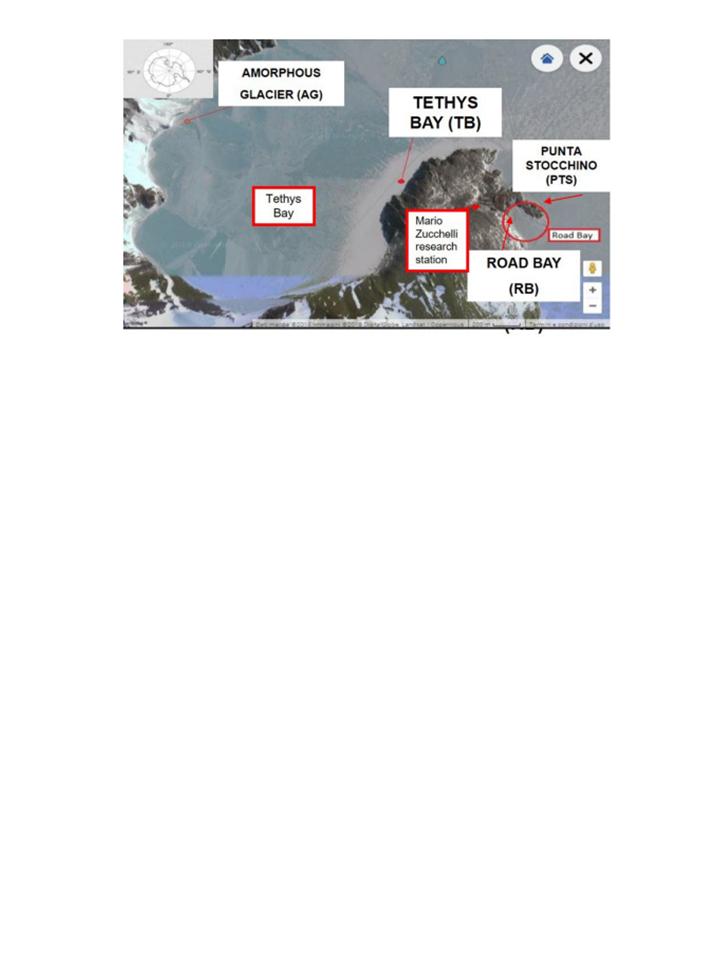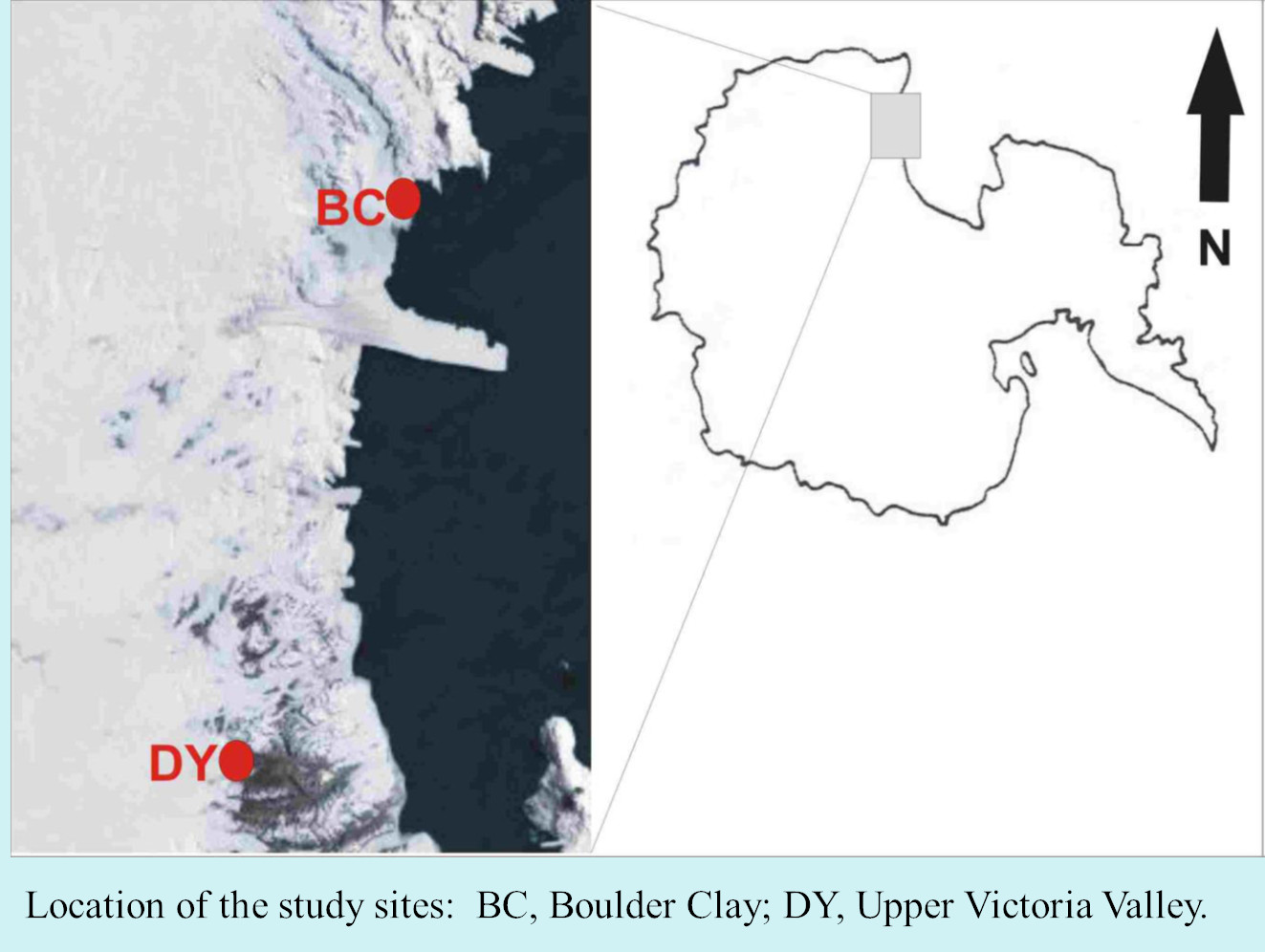notPlanned
Type of resources
Available actions
Topics
INSPIRE themes
Keywords
Contact for the resource
Provided by
Years
Formats
Representation types
Update frequencies
status
Scale
-
De novo transcriptome analysis of Colobanthus quitensis Antarctic vascular plant grown under condition miming the global warm-up.
-
This dataset contains a selection of bias-corrected data from the preoperational MiKlip system for decadal climate predictions (Mueller et al., 2018) used within the project PNRA18_00199-IPSODES. The adopted method for bias correction is described in the file bias_correction.pdf attached to the dataset. Also data from the assimilation run are provided. Nomenclature of variables follows that of the original MiKlip output. Mueller, W., et al. A Higher‐resolution Version of the Max Planck Institute Earth System Model (MPI‐ESM1.2‐HR). J. Adv. Model. Earth Syst. 10, 1383-1413 (2018)
-

The ANT-Biofilm research project (PNRA16_00105) concerned the study of microbial colonization processes in coastal environments of Terra Nova Bay (Ross Sea), through the analysis of the microbial biofilm (bacteria, microalgae) and macrobenthic settlement on plastic substrates, with the aim of determining their possible variations caused by natural or anthropogenic disturbances (variations in salinity or the presence of contaminants, respectively). Microbial biofilms, which play a key role as a substrate for larval settlement of many species of invertebrates, constitute hot-spots of microbial diversity; and it is also known that the communities a microbial are capable of responding rapidly to changing environmental conditions, acting as potential "sentinels" of natural or anthropic perturbations that recently are threatening the Antarctic biota. During the first year of activity (XXXIII Italian expedition, November 2017) stainless steel structures were fixed on the seabed of Road Bay and Tethys Bay mounting panels of artificial substrates (Polyvinyl Chloride, PVC and PolyEthylene, PE) for colonization, which during the XXXIV expedition (November 2018) were retrieved in order to study the fouling formation processes at different levels of biological complexity (from microbial community including bacteria and microalgae to benthic invertebrates) and to evaluate their evolution in two coastal sites differently exposed to natural or anthropogenic forcings.
-

The Middle Trophic Level of the Ross Sea is still not well known but it mainly characterized by two species of Krill: Euphausia superba, Euphausia Crystallorophias. These species are a key food source for a wide variety of marine birds and mammals in the Ross Sea. For this reason, it's necessary to improve the knowledge on abundance and spatial distribution of MTL species, and their interconnection with environmental parameters to understand the main drivers of the reproductive success and migrations of these species. In this project, an acoustic survey, a synoptic net sampling and a CTD/XBT samplings were carried out following the standard protocols indicated by CCAMLR. Acoustic monitoring was performed at five frequencies: 38, 70, 120, 200 and 333 kHz. Targeted net samplings were performed to validate the preliminary species allocation of the aggregations observed on the echosounder screen. Biometric measures of krill samples was made on board and samples were taken for further analysis. CTD and XBT data was collected and elaborated to characterize water masses and to study the possible influences of the distribution of the main oceanographic parameters on MTL species.
-

The efficacy and reliability of low-impact technologies were tested to document the occurrence and distribution of Antarctic toothfish in sea-ice covered coastal areas at Terra Nova Bay (Ross Sea). Ancillary information, including main water column parameters (temperature, salinity, density, dissolved oxygen, chlorophyll, and turbidity), was collected at each sampling station.
-

Permafrost hosts a potentially large pool of microorganisms, which is supposed to be the only life forms known to have retained viability over geological time. Thawing of the permafrost renews their physiological activity and exposes ancient life to modern ecosystems (Gilichinsky et al, 2008). The adaptation mechanisms of microorganisms, at species or population level, make them susceptible to extreme environmental conditions. The survival of microorganisms in permafrost raises the question of what constitutes the limit for microbial life (Steven et al., 2006; Wagner 2008).
-

The dataset contains 500-2000 MHz brightness temperature measurements gathered by the Ultra-Wideband Software Defined Microwave Radiometer (UWBRAD) during the Ice Sheet and Sea Ice Airborne Microwave eXperiment (ISSIUMAX) in Terra Nova Bay, Antarctica. The published dataset is in ascii format and consists of geolocated nadiral brightness temperature measurements collected over 12 sub-bands whose central frequencies are 560, 660, 820, 900, 1180, 1240, 1370, 1500, 1630, 1740, 1860, and 1950 MHz. Only measurements with a viewing angle within 5 deg with respect to nadir are reported.
-

Below the results obtained by the HOT ANTARCTICA project are presented. Results regarding geochemistry of crustal melts Main results obtained by the most prominent samples are described separately for each of the investigated terranes (Napier Complex, Lützow Holm Complex, Rauer Islands and Schrimacher Hills). The methodology employed during the work is also listed below: 1) Samples interrogated in this project were previously collected from Napier Complex (provided by the collaboration with Prof. Simon Harley, University of Edinburgh), Lützow Holm Complex (provided by the collaboration with Prof. Satish-Kumar, University of Niigata), Rauer Islands (provided by the collaboration with Prof. Simon Harley, University of Edinburgh and in collaboration with Zhao Liu, Northwest University ,China) and Schrimacher Hills (provided by the Museo Nazionale dell’Antartide, Siena, Italy). 2) Microstructural and petrographic study were done in all samples to identify equilibrium assemblages, melting reaction microstructures and occurrence of nanogranitoids (i.e. crystallized inclusions), melt and fluid inclusions. 3) Microstructural characterization of inclusions using Field Emission-Scanning Electron Microscope (FE-SEM) analyses were done: i) to identify the submicrometric phases within nanogranitoids and ii) to verify the homogeneity of remelted nanogranites and preserved glassy melt inclusions. 4) Experimental remelting of crystallized melt inclusions was performed to overcome the problem of MI decrepitation and volatile loss. The remelting of nanogranitoids was performed at high pressure with a piston cylinder apparatus using a QUICKpress piston cylinder apparatus produced by Depths of the Earth (installed at the Dipartimento di Geoscienze, UniPd). 5) Analysis of the major and trace elements contents of melt inclusions was carried out using i) an electron microprobe at the at University of Milan and ii) a LAICPMS at University of Perugia. 6) Thermodynamic modeling of anatectic conditions: the evaluation of P-T-X parameters and of P-T paths in the different geologic contexts were carried out using the software Perple_X. 7) Micro-Raman spectroscopy: characterization of fluid inclusions coexisting with melt inclusions was done using a HORIBA LabRam HR (high resolution) Raman microspectrometer at the University of Pavia. 8) Cross-comparison of data: during the development of this research project all collected data were analyzed by cross-comparing the information from the different geological contexts, with the aim to highlight similarities and differences. 9) Data discussion and evaluation: all data was analyzed and discussed in tight collaboration with the researchers involved in this project. 10) Synthesis and dissemination of results: dissemination of results was done with oral and poster presentations in several international conferences (see list on the appropriate section - Atti). Presentations include invited keynote presentations by the PI, Bruna Borges Carvalho at Goldschmidt (France, 2023) and Hutton Symposium (Italy, 2023). Invited seminars were also given in several important universities around the world [University of Bern, Switzerland; University of Cambridge, UK; University of Niigata, University of Kyoto, Japan]. Furthermore, a total of two research papers have been published in journals of high impact factor, and other two articles are in preparation. Here we also provide mineral, geochemical and geochronological data of studied areas at Rundvagshetta and Rauer Islands. Preprinted versions of two published article where the data is explained are also provided. Carvalho, B.B., Bartoli, O., Cesare, B., Satish-Kumar, M., Petrelli, M., Kawakami, T., Hokada, T., Gilio, M. (2023). Revealing the link between A-type granites and hottest melts from residual metasedimentary crust. Geology 51, 845-849. https://doi.org/10.1130/G51097.1 Liu, Z., Carvalho, B.B., Li, W., Tong, L., Bartoli, O., Li, C., Chen, L., ,Yan, Q, Wu, H. 2023. Into the high to ultrahigh temperature melting of Earth’s crust: Investigations of melt and fluid inclusions within Mg–rich metapelitic granulites from the Mather Peninsula, East Antarctica. Journal of Petrology 64, egad051. https://doi.org/10.1093/petrology/egad051 Results regarding petrology and geochronology of granulites In northern Victoria Land, the presence of two contrasting P-T paths suggests the possibility that high-grade complexes could have experienced a different metamorphic evolution both in space and time. Geochronological data of the Granite Harbour Intrusives support a prolonged magmatic activity (540-480 Ma), with multiple igneous pulses. This could imply the existence of magmatic underplating triggering the development of monometamorphic granulites during the Ross Orogeny. On the other hand, structural and PT evolution suggest the presence of a polymetamorphic granulitic belt that could be remnant of older orogeny as the Panafrican (ca. 600-500 Ma) (Lombardo et al., 1987; Palmeri, 1997; Talarico and Castelli, 1995). In order to discriminate mono- from poly-metamorphic evolution, metasedimentary granulite complex from the Deep Freeze Range has been investigated. Among all available granulite samples, a detailed petrographical study has been conducted to select the most representative and suitable HT granulite-facies rocks: four samples have been individuated for petrological and geochronological analyses (Opx-Grt and >30 µm Zrn/Mnz bearing), fifteen for geochemistry (absence of leucosome). In the Deep Freeze Range, HT granulites consist of Grt-Opx±Bt±Crd±Spl±Crn gneisses characterized by the presence of numerous Opx±Grt leucocratic segregations. Geochemical results confirm that analyzed granulite protholites have sedimentary origin, being comparable to Post Archean Australian Shale (PAAS; Taylor and McLennan, 1985), and they have been deposited in an orogenic setting (active continental margin). Petrographical, microstructural and mineral chemistry analyses show a metamorphic evolution including three different stages: Pl-Grt1-Spl-Crn-Ilm medium-P granulite facies (M1), Qtz-Pl-Opx-Grt1-Crd-Ilm-Kfs low-P granulite facies (M2), and Qtz-Pl-Grt2-Kfs-Bt-Ath low-P amphibolite (M3). Preliminary petrological results indicate that evolving metamorphic parageneses describe an initial isothermal decompression (exhumation event) followed by isobaric cooling; further thermodynamic modeling by software Perple_X will allow to better define P-T-X conditions. Geochronological studies involved the observation and analysis of monazites and zircons on four selected granulite thin sections. Investigations included X-ray mapping carried out under the electron microscope, CL-BSE imaging (zircons), and trace element analysis and U-Pb dating using LA-ICP-MS. Acquired data are still under review and will have a fundamental role in the reconstruction of the P-T-t path, thus making it possible to discriminate between mono- and poly-metamorphic hypotheses. References Lombardo et al 1987. Memorie della Società Geologica Italiana 33, 99-130. Palmeri R. 1997. Lithos 42, 47-66. Talarico and Castelli D. 1995. Precamb. Res. 75, 157-174. Taylor and McLennan S.M. 1985. Blackwell, Oxford, 312 p.
-

Anthropogenic microparticles (AMs) were found for the first time in specimens of Trematomus bernacchii collected in 1998 in the Ross Sea (Antarctica) and stored in the Antarctic Environmental Specimen Bank. Most of the identified AMs were fibers of natural and synthetic origin. The natural AMs were cellulosic, the synthetic ones were polyester, polypropylene, polypropylene/polyester, and cellulose acetate. The presence of dyes in the natural AMs indicates their anthropogenic origin. Five industrial dyes were identified by Raman spectroscopy with Indigo occurring in most of them (55%). Our research not only adds further data to the ongoing knowledge of pollution levels in the Antarctic ecosystem, it provides an interesting snapshot of the past, highlighting that microplastics and anthropogenic fiber pollution had already entered the Antarctic marine food web at the end of the ‘90 s. These findings therefore establish the foundations for understand the changes in marine litter pollution over time.